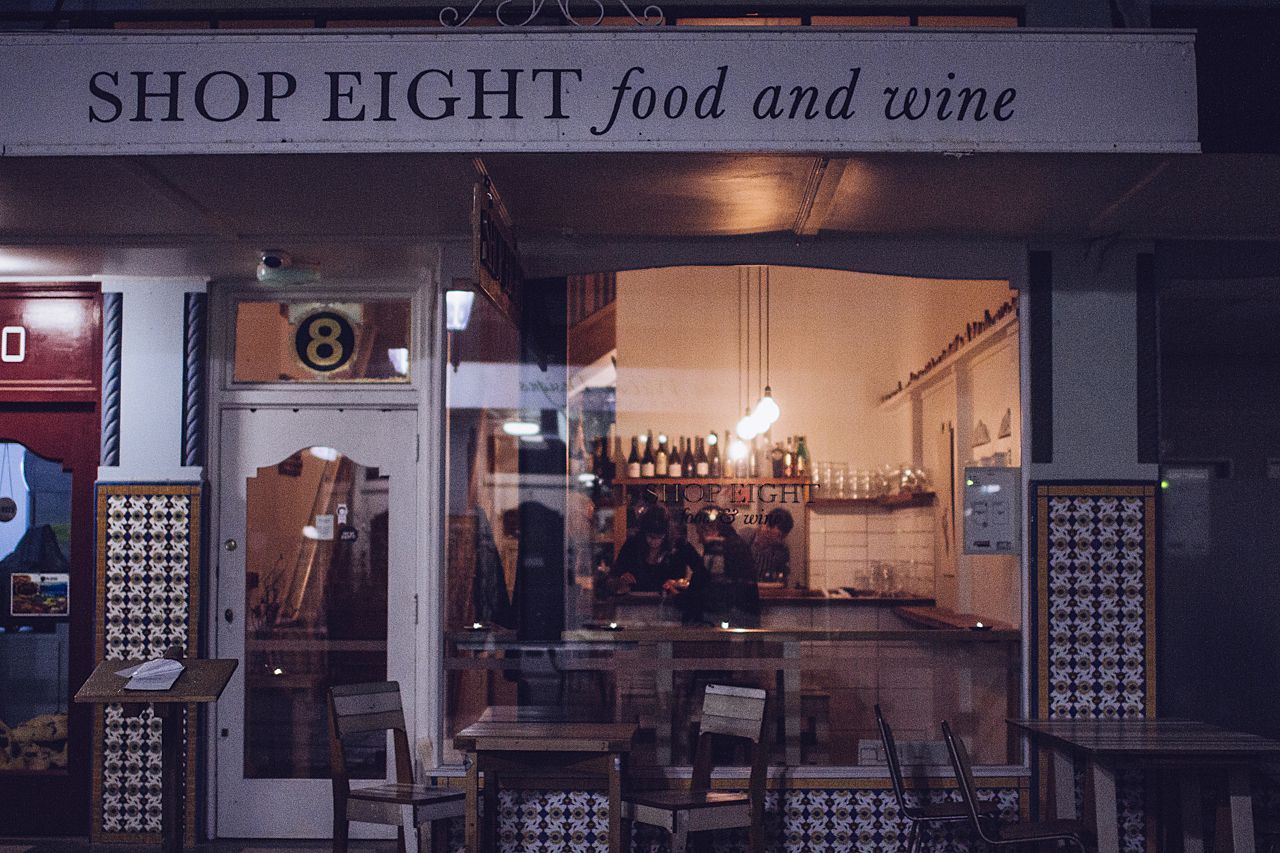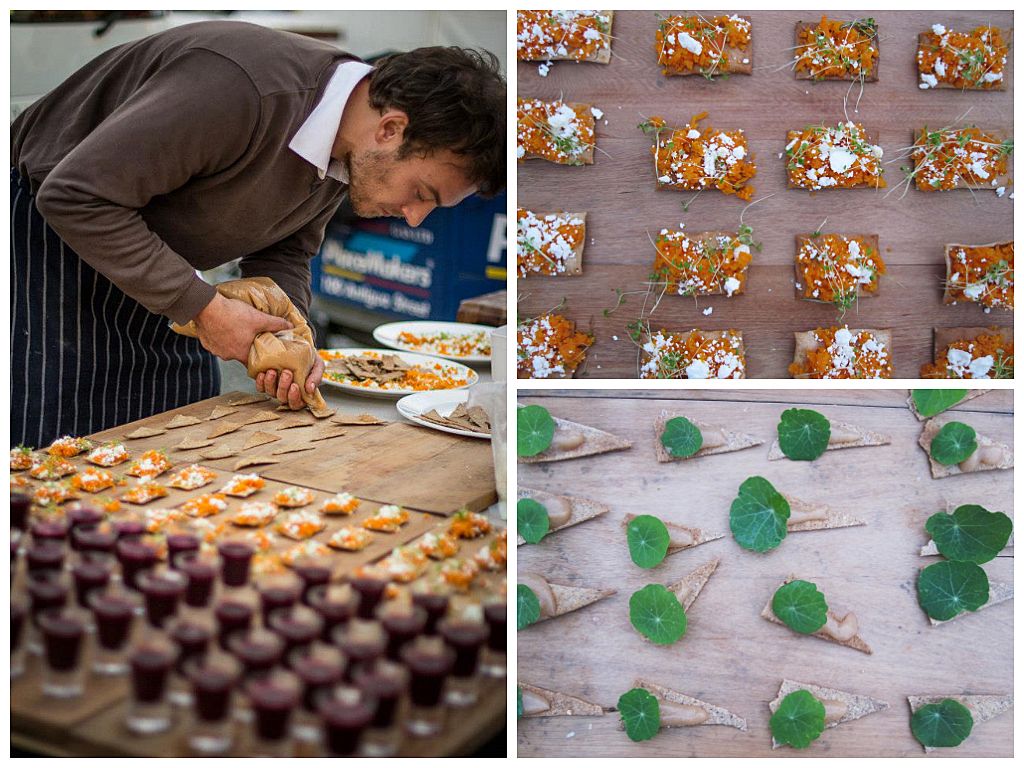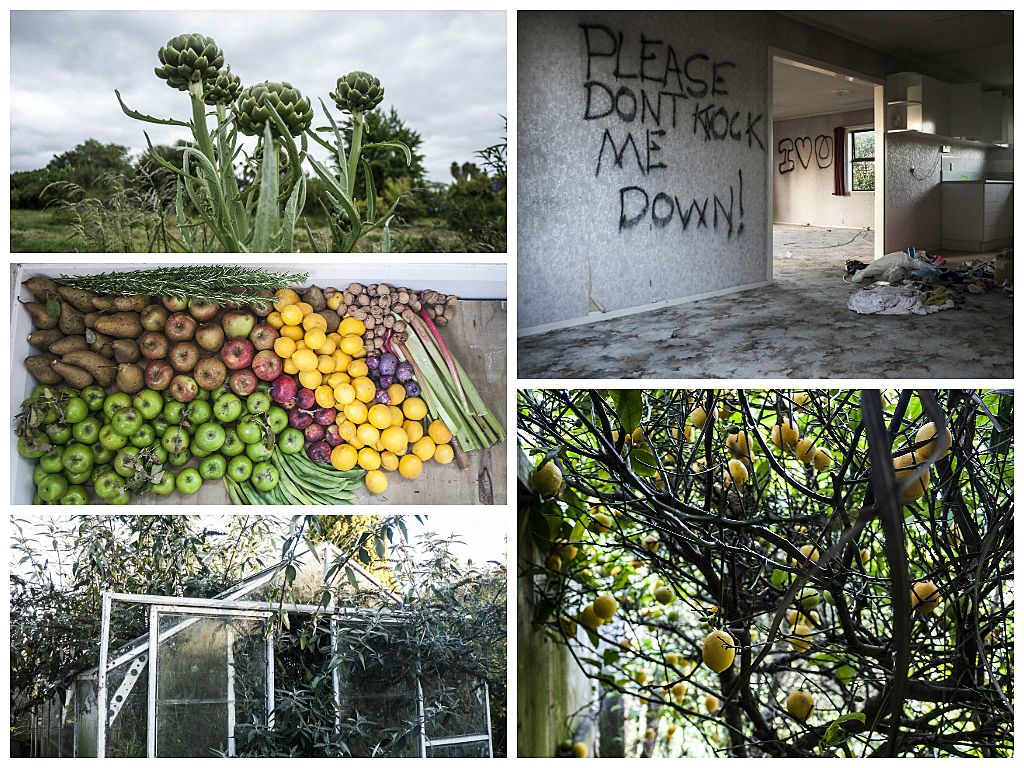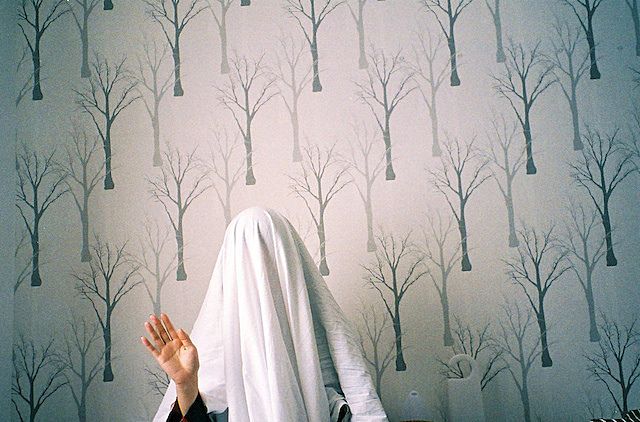Creative Thinkers of Christchurch: Alex Davies
Brie Sherow talks to Alex Davies as part of a series on the creative thinkers of Christchurch.
Alex Davies recognises that food can bring people together, and his initiatives often provide opportunities for chance encounters that are rare in Christchurch, but which are taken for granted in cities with well-used public space.
His first restaurant, A Local Food Project, used a wood-fired pizza oven in Christchurch’s most beloved rubble lot, The Commons – the former site of the Crowne Plaza Hotel and the informal civic centre for the city. Following the success of the pizza oven, Alex has – on two occasions - planned and cooked an entire menu in a day for over 100 people at the Pallet Pavilion, a community-built venue on the same site.
Now he has his own kitchen at Shop 8 wine bar on New Regent Street. He likes giving his guests new experiences, whether it’s a fish that’s at the top of the sustainability rankings, goat from a Lyttelton farm, or a story about how the pig they’re eating was raised. “It might not be immediate, it might not be blatant, because it’s just a meal, but I like to think that for some people it sets something off.” Maybe after trying a dish at Shop 8, a customer will buy mullet or anchovy at the shop instead of snapper. If people start questioning where their food comes from, they might do the same with their furniture and their clothes. When we make the most of the resources we have in the city, we realise we already have everything that we need to move forward.
Alex grew up in East London but has lived in Christchurch for most of his life. After losing his house in the earthquakes, he took the opportunity to return briefly to England and spent nine months exploring his childhood home as an adult. He remembered the place as an industrial wasteland, but upon return he saw that it’d changed. A site near his house, for example, had once been home to the largest refrigerator dump in Europe. It had been cleared for the Olympics, though, and the residents had created a cinema using the few remaining fridges. Alex was inspired to see its former use being referenced in a way that could be enjoyed by the community, and when he returned to New Zealand he was excited to see that there were similar initiatives in Christchurch. He was eager to get involved, and was inspired when he stumbled across the Pallet Pavillion. He calls it a mythical thing, difficult to describe to people who haven’t experienced it. “It’s just this thing made out of blue pallets, and I loved it.”
Alex believes in the honesty and immediacy of food. There’s no pretension. Through his work as a chef, he’s able to give people a direct connection to the surrounding land and he hopes that his dishes will make people think about their source. He does what he does because of a desire to share the quality of the local food with everyone from your average Cantabrian to visiting celebrities, including one of my favourite bands. I ask him about meeting Jurassic 5, hoping for some insider information on the band but instead confirming my suspicion that Alex’s interest lies in food above all else. “I started telling them about my food philosophy and I got excited and was like ‘Do you wanna see my kitchen?’ So they came into the kitchen and we were talking about what food means to them and what it means to me.”
Alex worked under chef Jeremy Rameka in Napier, who combined traditional Maori cuisine with classical French. He remembers cooking roast mutton bird with fried lamb’s brains, smoked eel porridge with crayfish tail, and incorporating raw kina into dishes. Alex was inspired by the way that Jeremy used food to tell stories about the place. He’d created a dish using game bird and matai berries, referencing the wood pigeons that would gorge themselves on berries and then fall from the trees, making them easy to collect. “It was just a nod, a bit of playfulness.”
When Alex first started A Local Food Project at The Commons, it was with those same principles, using local food in a playful way to tell a story about the region. The scene was surreal: a woodfired oven made of clay in the middle of a rubble lot next to a big structure made from pallets. All the ingredients came from regional farmers or were foraged, like the walnuts from his neighbour’s tree. He served only one pizza on the menu each day, offering people no choice – which he was nervous about at first, but he found that regular customers looked forward to finding out what was next on offer.
On his first day, he served tomato and basil – the basil coming from a live plant sitting on the centre of the table, with customers being able to pick their own if they wanted it on their pizza. “That linked people to the plant that they were eating, and it was me saying ‘this is who I am and this is what I’m doing.’”
Admiring Alex’s food philosophy, Gap Filler’s Coralie Winn approached him to cater for the Pallet Pavilion seasonal feasts. He planned the summer feast with chef Aleisha McGilligan over a few days, finalising it only on the morning of the feast itself. Most people would be anxious coordinating a meal for over 100 people within a day, but Alex says “It was quite funny to cater for that many people spontaneously.”
Alex sources his menu from local growers, but doesn’t place orders with the farmers. Instead, he relies on them to bring him the best of the produce as it becomes available. It’s something most restaurants wouldn’t be able to do, since local farmers grow mixed produce in small plots and traditional restaurants need large quantities of specific items regularly. It’s an approach that means he doesn’t know what’s available until the day, due to storms or disturbances that affect the produce. The spontaneity involved is important in urban environments: if we’re able to effectively use the resources we have available, we’re better equipped to cope with disturbances in urban systems. Alex’s approach as a chef is similar to the community use of the land that LIVS coordinates in the central city, with vacant spaces best used when they’re hosting locally-grounded activities that are responding to the space that’s available.
The Pallet Pavilion winter feast was smaller than its summer version, and had greater emphasis on encouraging conversation: placed in the centre of each table was a communal bowl of soup, as well as assorted canapés to share. The canapés were made from ingredients Alex had foraged that morning. Instead of pepper, he used a wild herb called nasturtium, which was growing on vacant lots throughout the central city. “Just little points of interest that were fun, to find something like that within the four aves that people might not necessarily be familiar with.” Foraging opportunities in the central city are surpassed by the produce available in the residential red zone. Documented by Liv Worsnop of Plant Gang, entire neighbourhoods have been left vacant for years and residential gardens grow wild. Alex makes note of the plants that are hardy and can grow without maintenance from humans: fruit trees, herbs, vegetables – especially rhubarb. Occasionally he’ll even come across chickens roaming free.
In the red zone you feel like you're in the country. “There was so much growing out there, so many flowers and bees and birds. It was just really beautiful.” Although there are fines if you get caught, people still enter the space. “It’s amazing. Sometimes you’d see creepers growing into houses. Branches of fruit trees would crowd into gardens. The apples would fall and the compost would create this amazing fertile environment.” He describes finding treasures like Bolete and Porcini mushrooms that were different from any other he’d tasted. The soil had been undisturbed for nearly three years at that point so it was developing its own flavour profiles, different from land that had been interrupted.
He describes finding treasures like Bolete and Porcini mushrooms that were different from any other he’d tasted. The soil had been undisturbed for nearly three years at that point so it was developing its own flavour profiles, different from land that had been interrupted.
Like the rest of the city, this area is changing. Due to demolitions, many of the houses are now gone and the trees and plants have been chopped or mowed. “They say it’s a fire risk, but there was something quite beautiful and unique emerging from this.” With the talk of turning the residential red zone into a food forest, it seems wasteful to obliterate everything that was there to start with. “Nature has claimed itself back and then these guys have gone in and mowed everything down - what a waste of time and money.” It’s the same approach that was taken in the central city with the built infrastructure. CERA chose to eradicate what was already there instead of capitalising on the existing resources.
Alex says that people can be reluctant to try something new. “I’ll put pig’s head and blood terrine on the menu and that will frighten most people who just want to go out and have a steak. It’s challenging when you’re reading a menu and it’s all parsnips and brussels sprouts cause that’s what you’ve got at the moment and you get people that just want a fresh salad.” He says that it’s the initial step that’s difficult. Once people try something new they generally like it, although even if the response is positive, it can take much longer to get recognition. It takes a cultural shift. The thought of that cultural shift is what excites Alex about the future of Christchurch. “We’re at the centre of a region that is abundant with produce,” he notes, “and there’s no reason why this place couldn't be the best place for dining in New Zealand.”
Also in this series:
Reconstruction and Renaissance
Bridget McKendry of Makercrate
Audrey Baldwin
Amiria Kiddle
Bailey Peryman of Garden City 2.0






